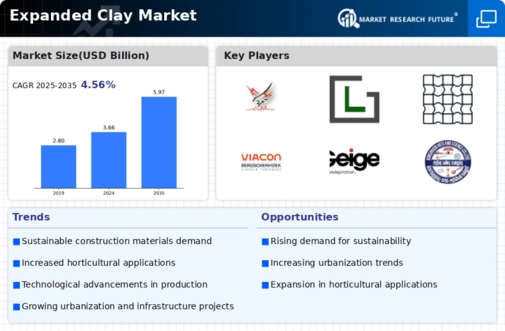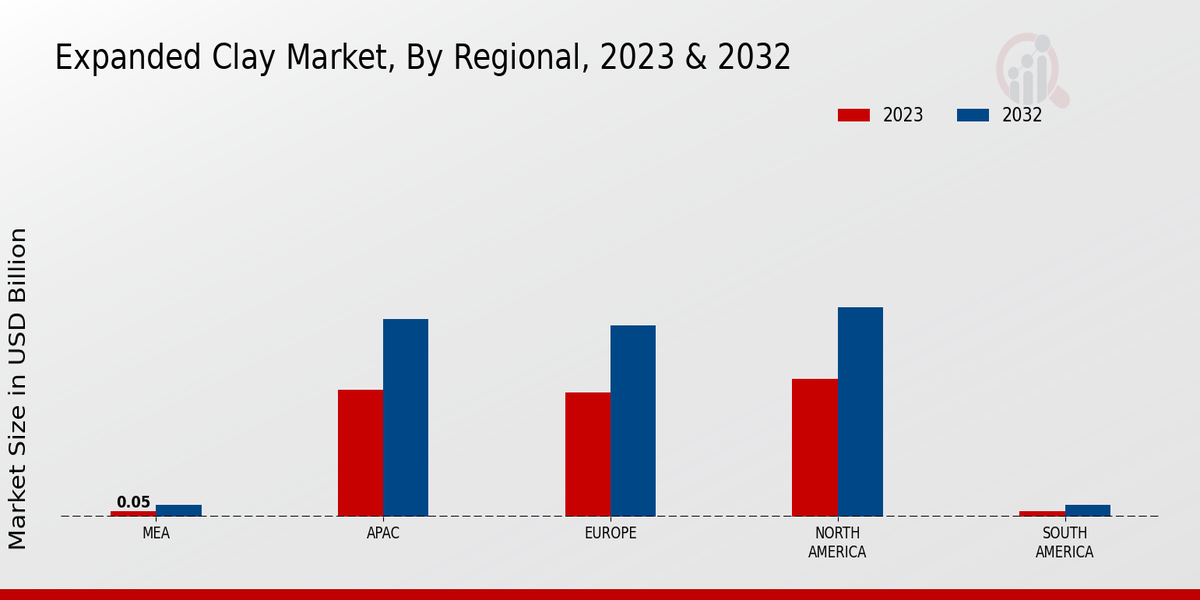Growing Demand in Construction Sector
The Global Expanded Clay Market Industry experiences a notable surge in demand driven by the construction sector. As urbanization accelerates, the need for lightweight and durable building materials becomes paramount. Expanded clay aggregates are increasingly utilized in concrete production, enhancing structural integrity while reducing overall weight. This trend is reflected in the market's projected growth, with an estimated value of 3.66 USD Billion in 2024, expected to rise to 5.97 USD Billion by 2035. The compound annual growth rate (CAGR) of 4.55% from 2025 to 2035 further underscores the expanding role of expanded clay in modern construction practices.
Diverse Applications Across Industries
The Global Expanded Clay Market Industry is characterized by its diverse applications across various sectors, including construction, horticulture, and environmental management. In construction, expanded clay is utilized for lightweight concrete and insulation materials, while in horticulture, it serves as an effective growing medium. Additionally, its use in water filtration and drainage systems highlights its versatility. This broad applicability not only supports the market's expansion but also attracts investment and innovation. As industries continue to explore new uses for expanded clay, the market is poised for sustained growth.
Environmental Sustainability Initiatives
The Global Expanded Clay Market Industry is significantly influenced by the increasing emphasis on environmental sustainability. Expanded clay, being a natural and recyclable material, aligns with the growing demand for eco-friendly construction solutions. Governments and organizations worldwide are promoting sustainable building practices, which include the use of expanded clay in various applications such as green roofs and lightweight concrete. This shift towards sustainability not only enhances the market's appeal but also contributes to its growth trajectory, as stakeholders seek materials that minimize environmental impact while maintaining performance standards.
Technological Advancements in Production
Technological advancements in the production of expanded clay are shaping the Global Expanded Clay Market Industry. Innovations in manufacturing processes have led to improved efficiency and product quality, allowing for the production of lighter and more durable aggregates. These advancements facilitate the use of expanded clay in diverse applications, from horticulture to construction. As production techniques evolve, the market is likely to witness increased adoption of expanded clay products, further driving growth. The ability to produce high-quality expanded clay at competitive prices positions the industry favorably in a rapidly changing market landscape.
Rising Awareness of Lightweight Materials
The Global Expanded Clay Market Industry benefits from the rising awareness of the advantages of lightweight materials in construction and landscaping. Expanded clay aggregates offer superior insulation properties and reduce the overall weight of structures, which can lead to cost savings in transportation and installation. As architects and builders increasingly recognize these benefits, the demand for expanded clay is expected to rise. This trend is particularly relevant in regions where building codes emphasize energy efficiency and sustainability, thereby enhancing the market's growth potential in the coming years.




















Leave a Comment